Activation Debt Is Slowing Down Your Entire Growth Engine
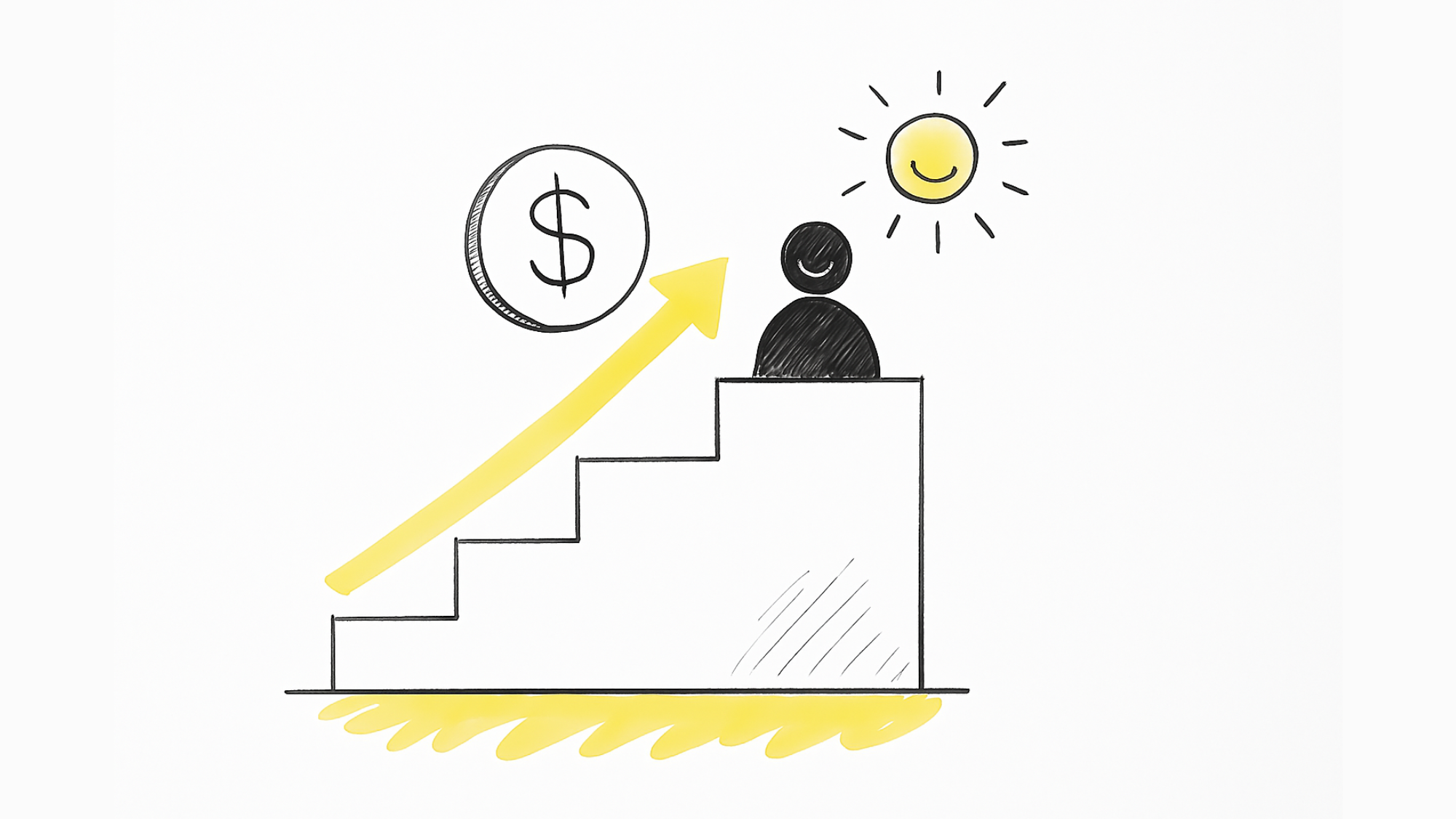
Your SaaS is growing. Revenue is up, customer count is climbing, and your product roadmap is packed with features your users actually want. Yet this isn't enough.
While your company scales in revenue, you're facing two significant challenges:
- Optimizing metrics across the whole funnel is becoming increasingly difficult as activation grows more complex, adoption timelines lengthen, and retention improvement tactics become harder to implement.
- The costs to drive growth are rising as your cost-per-customer balloons due to manual processes and product complexity.
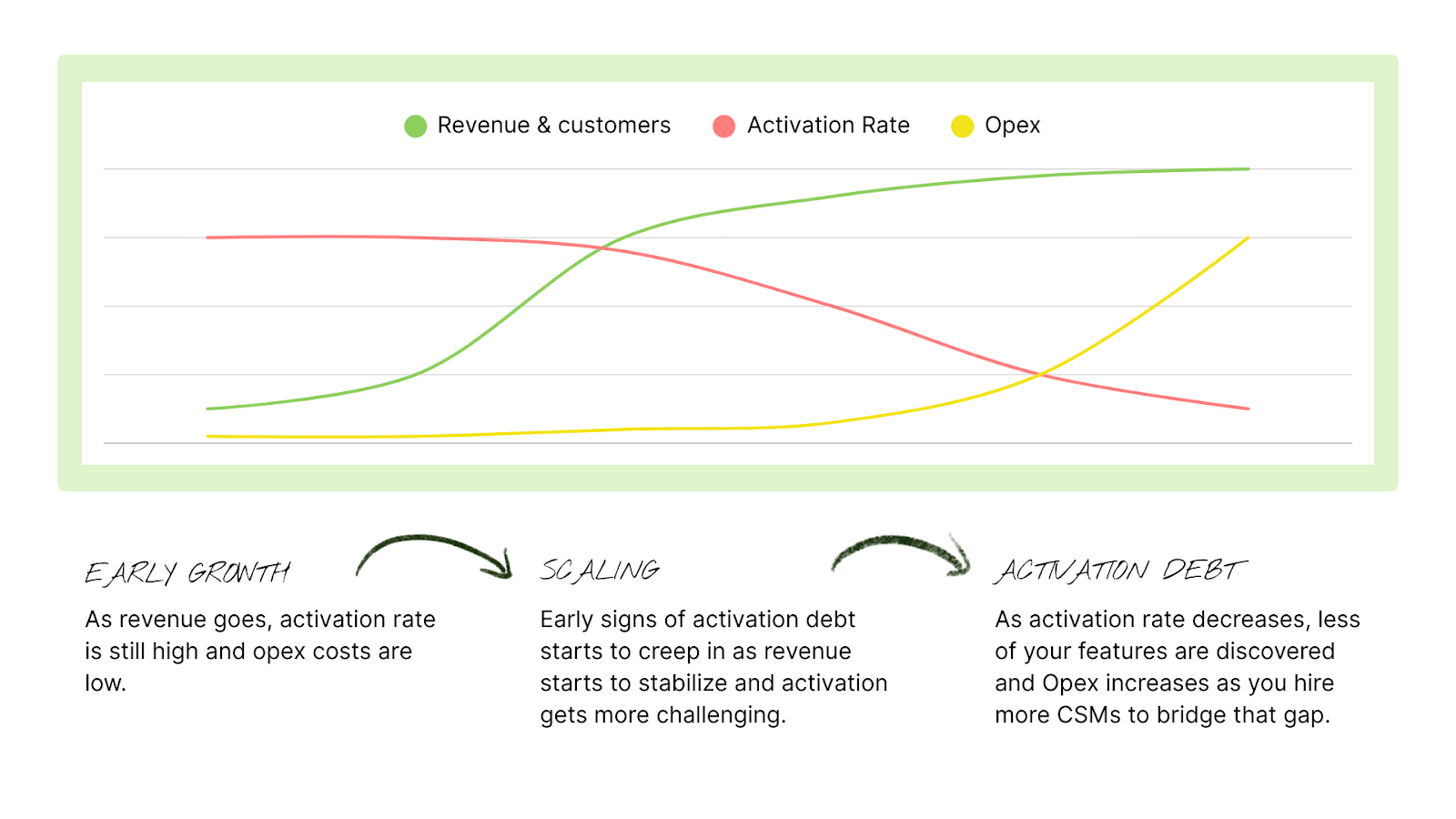
You've diligently followed the traditional AARRR framework, optimizing all the metrics that growth playbooks champion. But now your stakeholders are looking beyond funnel metrics. They're scrutinizing your entire P&L, questioning your capital efficiency and cost sustainability as you scale.
What you're experiencing is what we at Quarterzip call "activation debt"—one of the biggest growth constraints in modern B2B SaaS that blocks companies from unlocking the next stage of sustainable growth.
The Vicious Cycle That Comes With Success
Like technical debt, activation debt isn't necessarily a sign of failure. It's an unavoidable byproduct of doing things right.
When you find product-market fit, expand your customer base, and land those big-name clients, your product evolves. Each new customer brings unique use cases; you listen, adapt, and build precisely what they need, which opens doors to even more use cases. Meanwhile, AI creates a paradigm shift that unlocks unprecedented value in software. Your teams—Product, Marketing, Sales, and CSM—can barely keep pace as your product becomes more powerful month after month.
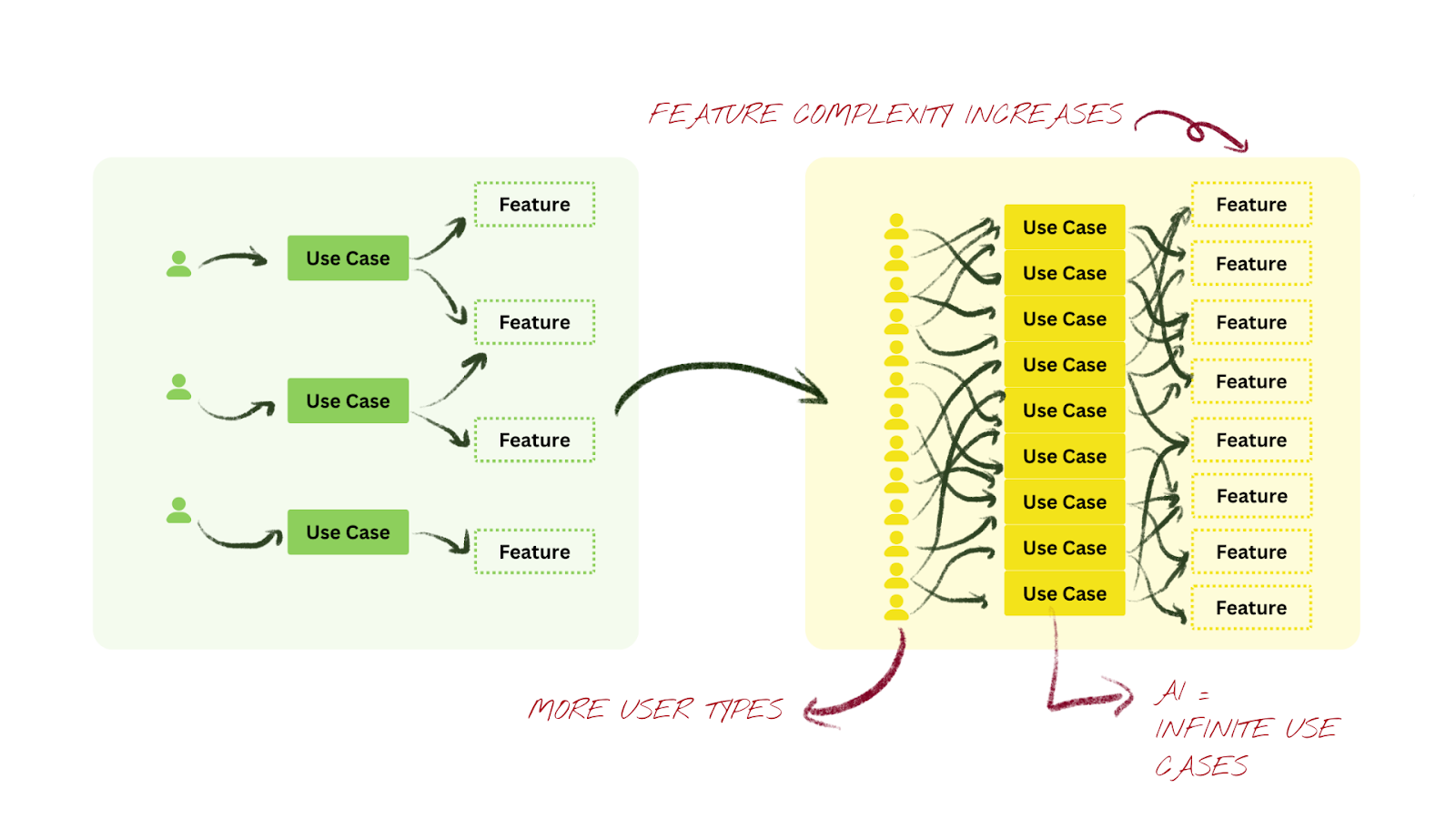
This is where activation debt begins to creep in:
- Onboarding complexity skyrockets. Suddenly, your customer-facing teams face the impossible task of mastering everything you've built. The very innovation that drove your success now makes it harder for different user types to discover your product's true value.
- Your team shifts from strategic to reactive. Even your best CSMs struggle to maintain expertise across all features, use cases, and customer types. They spend their days troubleshooting and answering "how do I..." questions instead of driving account expansion and building long-term strategic partnerships.
We've observed this trend intensifying across the industry. It's because many of the existing solutions today are simply not scalable, especially as SaaS companies increasingly move towards a hybrid sales model and implement AI features that dramatically increase the number of potential use cases and scenarios—a problem that only compounds:
- Instant, one of the fastest-growing startups, aptly described this challenge when launching their second successful AI-powered product: "Self-serve onboarding flows work initially—but once customers get stuck, product managers end up jumping in. That's fine in the early days, but with 70–80 customers at once, it quickly becomes unsustainable. It's a good problem to have—too many customers, too many features, too many variables—but it's still a problem."
- Heidi Health, one of Australia's top health-tech startups, emphasizes that self-serve activation "is slipping through the cracks and just gets harder at scale. And unless you solve it, you end up hiring more CSMs just to keep up with activation and adoption.
The Real Cost of Activation Debt
The true impact of activation debt begins with your team's operational efficiency.
As your company scales, so do your teams—growing larger and spread across regions and markets. Product, CSM, Sales, and Marketing each own parts of the customer journey but struggle to maintain a shared understanding.
Product teams lean heavily on CSMs and Sales for customer insights, especially for complex, high-value accounts. Marketing runs campaigns without up-to-date feedback on which use cases actually resonate. Across regions, aligning messaging, activation priorities, and feature positioning becomes a logistical challenge.
The feedback loop starts to break down. Features get shipped without a clear activation plan, onboarding lags behind product releases, and marketing promotes capabilities customers may never be guided to use. While these silos existed before, the rapid pace of software evolution—accelerated by AI—makes this gap widen faster than teams can close it.
The result? The cost on the business is significant:
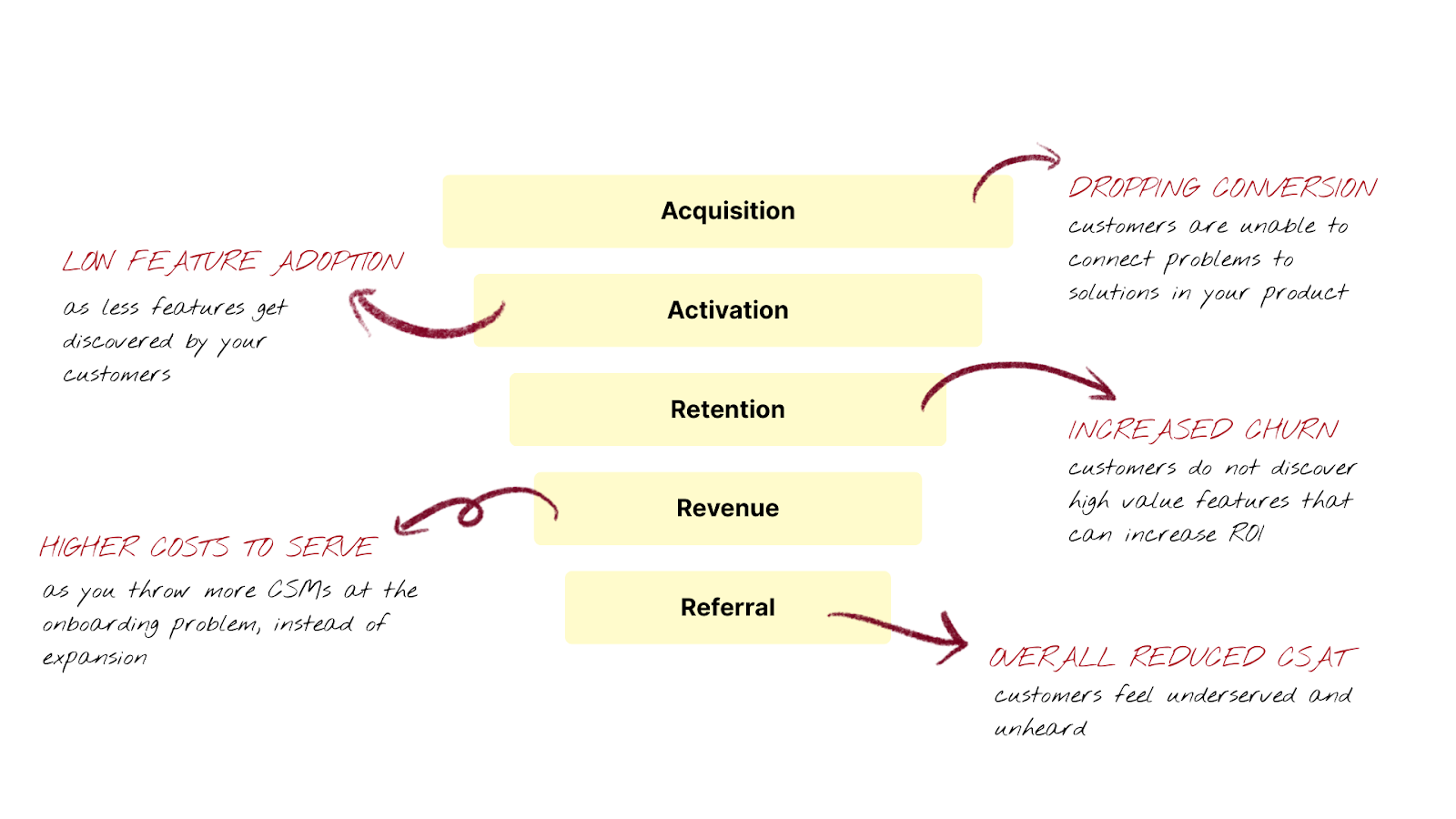
- Low feature adoption as your most differentiated features—the ones that justify your pricing—sit unused
- Dropping conversion rates when prospects can't connect their use cases to your capabilities during trials
- Higher costs-to-serve as onboarding and support costs rise while revenue per customer stagnates
- Increased churn as customers conclude your product isn't worth the investment, not because it can't solve their problems, but because they never discovered it could
This is why, as one expert put it, "A lot of activation is slipping through the cracks in self-serve, simply because there’s no scalable way to guide every customer based on their behavior. It’s not broken—it just gets harder at scale. And unless you solve it, you end up throwing people at the problem, hiring more CSMs just to keep up with activation and adoption."
This last point is crucial. Activation debt directly inflates your operational expenses. The manual intervention required to onboard and support a growing customer base means you must continually add headcount to your customer-facing teams, directly impacting your P&L and capital efficiency.
How to Measure Activation Debt
Activation debt is not always obvious because it spreads across many parts of your business. Like technical debt, it doesn't show up as one clear problem but instead surfaces in different ways depending on the underlying causes and where the friction occurs.
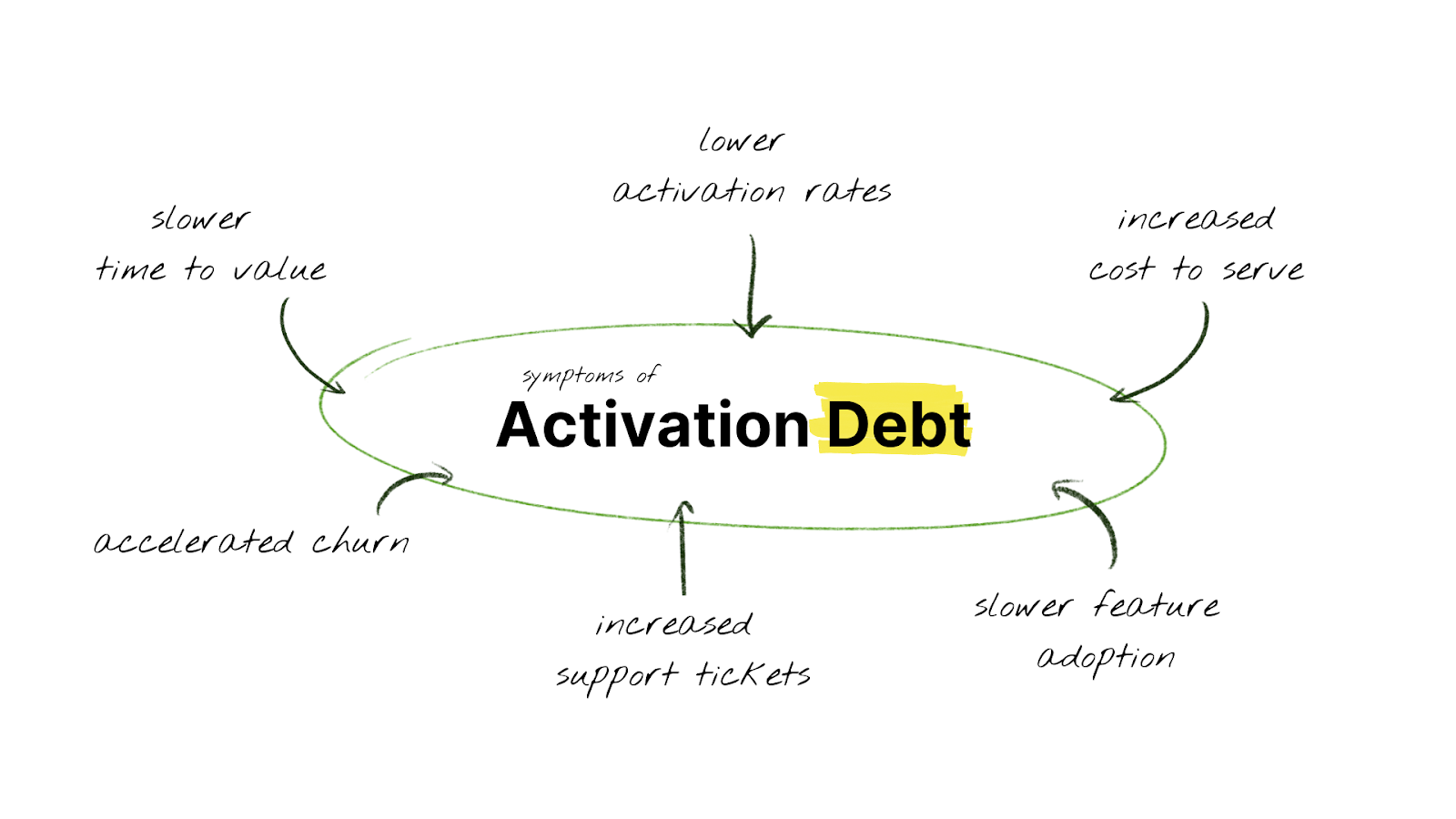
The most obvious sign is declining activation rates. According to Lenny Rachitsky's comprehensive survey of over 500 companies, the average activation rate across SaaS products is 36%, with the median at 30%. We predict these benchmarks will drop as AI accelerates feature development, creating more complexity faster than teams can manage it.
- Time-to-value by cohort. Newer customers take longer to reach meaningful outcomes compared to six months ago.
- Cost to serve per customer. You're investing more resources and implementing manual processes just to maintain a healthy activation rate.
- Feature adoption lag. The gap between feature release and meaningful adoption is widening. This growing gap indicates activation debt—users aren't effectively discovering your product's new value.
- Support ticket volume by product area. Spikes in "how do I..." tickets signal features that users want to use but can't figure out independently.
- Accelerated churn. Inconsistent and fragmented user experiences drive customers away as your product scales.
The Future of Activation
Paying down activation debt requires the same discipline as managing technical debt—it needs to be an ongoing priority, not a one-off investment.
- Rally your team around activation debt. The first step to tackling activation debt is awareness and recognition of the issue. Leaders must help teams understand how activation debt impacts each department's KPIs. Growth teams should track key metrics and experiment to remove friction. Product managers need to prioritize activation in feature design. Marketing should align messaging to support adoption, while Customer Success provides frontline insights on activation gaps. Only by creating cross-functional alignment can you effectively address this systemic challenge.
- From one-off to continuous onboarding. The traditional “Day 7, Day 14, Day 30” onboarding model no longer scales as your product evolves and user needs grow more complex. Build adaptive systems that activate users on new features whenever they actually need them—months or even years after initial sign-up—meeting customers where they are in their journey.
- Leverage AI for white-glove personalization at scale. Recent AI breakthroughs in video and voice agents now enable personalized experiences for every single user without increasing operational costs. This means delivering premium, white-glove service to all customers—not just enterprise accounts—while allowing your CSM team to focus on strategic initiatives, account expansion, and building relationships with key decision makers rather than repetitive onboarding tasks.
The companies that scale successfully don't avoid complexity—they build systems that help users navigate it. They don't prevent activation debt from forming—they pay it down consistently before it compounds into a growth-limiting problem.
Your product is probably better than your users realize. Make sure they get the chance to find out.
At Quarterzip, we're building voice and video agents that eliminate activation debt by automating personalized onboarding and configuration at scale. If you're a high-growth B2B SaaS company struggling with manual customer onboarding processes, we'd love to show you how continuous onboarding can accelerate your time-to-revenue and scale your growth efficiently.
Supercharge your post sales teams

